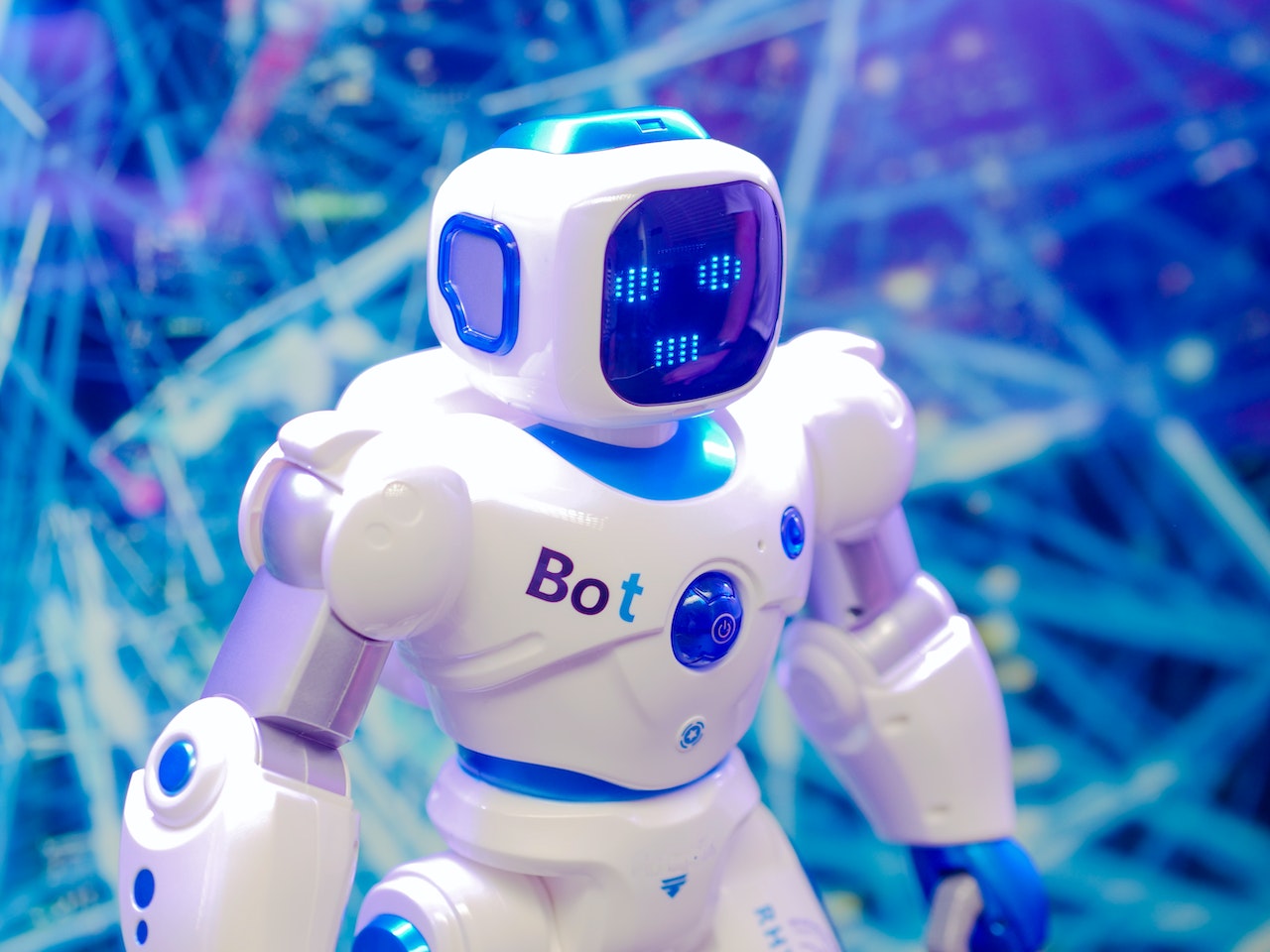Smart Automation: How AI and Robotics are Revolutionizing the Future of Work

January 02, 2024
In the last decade, advances in technology have transformed the way we live and work. One of the most significant technological trends of the 21st century is the rise of smart automation. Smart automation is the integration of artificial intelligence (AI) and robotics to create intelligent, autonomous systems that can perform tasks without human intervention. In this article, we will explore how smart automation is changing the future of work and how it can benefit businesses.
What is Smart Automation?
Smart automation refers to the use of advanced technologies such as artificial intelligence (AI), machine learning (ML), robotics, and the Internet of Things (IoT) to automate processes in a more intelligent and efficient way.
Unlike traditional automation, smart automation systems can learn from data, recognize patterns, make decisions, and adjust their behavior in real-time. This enables them to automate complex and dynamic processes that were previously difficult or impossible to automate.
Smart automation can be applied in various fields such as manufacturing, healthcare, finance, and transportation, among others. By automating repetitive and labor-intensive tasks, smart automation can help reduce costs, improve productivity, enhance accuracy, and free up human workers to focus on higher-level tasks that require creativity and critical thinking.
What are the advantages of Smart Automation?
There are many advantages of smart automation, including:
- Increased productivity: Smart automation can perform tasks faster and more efficiently than humans, leading to increased productivity and output.
- Improved accuracy: Smart automation can reduce errors and improve quality by performing tasks with greater precision and consistency.
- Cost savings: By automating repetitive and labor-intensive tasks, smart automation can help reduce labor costs and improve the bottom line.
- Increased safety: Smart automation can help reduce the risk of workplace injuries by performing tasks that are dangerous for humans.
- Improved scalability: Smart automation can scale to meet changing business needs and handle larger volumes of work without additional labor costs.
- Faster time to market: By automating tasks such as testing and quality control, smart automation can help bring products and services to market faster.
- Enhanced customer experience: Smart automation can help improve customer services by enabling faster response times and more accurate information.
Smart automation can help organizations become more efficient, agile, and competitive in today's rapidly changing business environment.
Important use cases of Smart Automation
There are several important use cases for smart automation across various industries and business functions. Here are a few examples:
- Manufacturing: Smart automation can be used to improve the efficiency and quality of manufacturing processes. For example, robots can be programmed to assemble products on a production line, while machine learning algorithms can analyze sensor data to identify potential quality issues before they occur.
- Customer service: Chatbots and virtual assistants powered by natural language processing (NLP) and machine learning can provide customers with quick and accurate responses to their queries. This can help reduce wait times and improve customer satisfaction.
- Healthcare: Smart automation can be used to improve patient outcomes and reduce costs. For example, robots can be used to assist with surgery, while AI algorithms can analyze medical images to identify potential health issues.
- Finance: Smart automation can be used to improve the speed and accuracy of financial processes. For example, machine learning algorithms can be used to automate fraud detection, while robots can be used to perform repetitive accounting tasks.
- Human resources: Smart automation can be used to streamline HR processes, such as recruiting and onboarding. For example, chatbots can be used to answer candidate queries, while AI algorithms can be used to screen resumes and identify the most qualified candidates.
- Supply chain management: Smart automation can be used to improve the efficiency and visibility of the supply chain. For example, IoT sensors can be used to track the location and conditions of goods, while AI algorithms can be used to optimize inventory levels and reduce waste.
Overall, smart automation has the potential to transform many aspects of business and society, and its applications are only limited by our imagination.
Challenges facing Smart Automation
While smart automation offers many benefits, there are also several challenges that organizations may face when implementing these technologies. Here are a few examples:
- Cost: Implementing smart automation can be expensive, and organizations may need to invest in new hardware, software, and training to fully realize the benefits.
- Skillset: Implementing smart automation requires a different skillset that traditional automation. Organizations may need to train their existing workforce or hire new talent to manage and maintain these systems.
- Security: Smart automation systems may introduce new security risks, such as data breaches or cyber attacks. Organizations need to implement strong security measures to protect their data and systems.
- Ethics: Smart automation raises ethical concerns around job displacement and the impact on workers. Organizations need to consider how they can implement these technologies in a way that is fair and responsible.
- Regulatory compliance: Smart automation may be subject to regulatory requirements and standards. Organizations need to ensure that their systems are compliant with applicable laws and regulations.
- Integration: Smart automation systems may need to integrate with existing legacy systems, which can be complex and time-consuming.
- Data quality: Smart automation relies on high-quality data to make accurate decisions. Organizations need to ensure that their data is clean, accurate, and up-to-date.
Organizations need to carefully consider the challenges of smart automation and develop a strategic plan to address these issues before implementing these technologies.
The future of Smart Automation
The future of smart automation is likely to be driven by advances in artificial intelligence (AI), machine learning (ML), robotics, and the Internet of Things (IoT). Here are a few trends and predictions for the future of smart automation:
- More advanced AI and ML algorithms: As AI and ML technologies continue to evolve, we can expect more advanced algorithms that are capable of more complex and sophisticated decision-making.
- Increase use of robotics: Robotics technology is likely to become more advanced and affordable, leading to increased use of robots in manufacturing, healthcare, and other industries.
- Integration with other emerging technologies: Smart automation is likely to be integrated with other emerging technologies such as blockchain, edge computing, and 5G to create even more advanced and powerful systems.
- Increased focus on collaboration: As smart automation systems become more complex, there will be a greater focus on collaboration between humans and machines. We can expect to see more hybrid systems that combine the strengths of both.
- Greater emphasis on explainability and transparency: As smart automation systems become more autonomous and make decisions that affect people's lives, there will be a greater emphasis on making these systems transparent and explainable.
- More use cases in new industries: As smart automation becomes more advanced and affordable, we can expect to see it used in new industries and applications that were previously not possible.
The future of smart automation is likely to be exciting and transformative, and it has the potential to revolutionize many aspects of business and society.
Conclusion
Smart automation is changing the future of work by improving efficiency and productivity, enhancing quality control, reducing labor costs, providing a safer work environment, and increasing data analysis capabilities. While there are still concerns about the impact of smart automation on employment, there is no doubt that smart automation has the potential to revolutionize the way we work and create new opportunities for businesses. As technology continues to advance, businesses must stay informed about the latest developments in smart automation and how they can benefit from them.
Editor:
David Sule
A highly skilled Software Engineer with a unique blend of expertise in Law and Information Technology. My enthusiasm for Information Technology goes beyond the corporate world, as I am driven by a strong desire to harness technology’s potential for the empowerment of underprivileged communities throughout Africa. Boasting 5 years of hands-on programming experience, my proficiency encompasses various facets of Software Development and multiple programming languages.
Recommended Articles
Location Intelligence: Harnessing the Power of Geospatial Data
Location intelligence is a field of study that leverages geospatial data to gain insights and make informed decisions.
Achieving Sustainable Development Goals: A Comprehensive Guide
Sustainable development has become has become a critical concern in recent years, with countries now recognizing the urgent need to address this.

